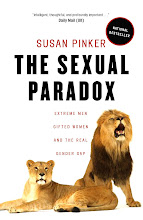
My friends and family know that I’m an inveterate matchmaker. But after some spectacular successes, I gave up this pastime after a colleague fell hard for a beautiful, inscrutable single friend I’d introduced him to at brunch. He fell so hard, in fact, that after their first rendez-vous he started to lose weight, stopped shaving, and looked downright gaunt and dejected, as the emails, flowers and chocolates he sent her after their first meetings were rebuffed. He was lovesick. She wasn’t. I had failed.
Now I’ve decided to resume the practice right here, this time setting up prospective female directors with recruiters and the companies who want them to fill out their boards—so to speak. A Globe and Mail column I wrote about the paucity of women on corporate boards prompted passionate responses, from both sides: the qualified women who want board positions, and the recruiters and senior executives who were trying to find Ms. Right. What jumpstarted the column was a question from a reader about who wrote about how difficult it is to find qualified women to sit on boards in the energy industry. Some readers in that industry agreed. “At (name of energy company) a senior female executive tried to promote women to the top, with the idea of creating a larger pool to draw directors from. Quotas were used but were difficult to achieve due to the limited pool. Sometimes positive reverse discrimination was used, whereby if two candidates of equal qualifications applied, one male one female, the female would get the nod. It’s working but it will take at least 10 to 15 years before there is enough talent to reach critical mass,” he wrote, adding that a number senior women still drop out of sight before they can offer their expertise. The recent departures of the head of Alternative Energy at BP, Vivienne Cox, and that of Linda Cook, of Shell along with six other female senior executives, are evidence that this is more than a rumor.“There is a lot of competition for their time,” was my male reader’s understated view. As progressive as his opinion might seem to some, female directors in Canada have described quotas as “repugnant” and say they prefer merit-based appointments to affirmative action. Like my friend who didn't want to be desired for her beauty alone, they don't want to be seen as tokens, after all.
Still other readers were incredulous. When a letter from a reader begins with “with all due respect,” I sit up and get ready to be flamed. Happily, this time I wasn’t pilloried but simply encouraged to let my readers know about the Institute of Corporate Directors, which keeps a database of men and women who have completed their directors’ training course, and which offers a matching service. This reader was a happy customer of the ICD, and felt others in need of directors should do their shopping there.
Lest you think, then, that my match-making services are now redundant, consider this: all of the women I interviewed for the column on female board members were sitting on multiple boards. And there was little cross-over between the public and private sectors. In that respect they belonged to a modern version of the “old boys’ clubs” that preceded them. Like the handful of adolescents who are responsible for a high school’s intellectual and social life, they were the life of the party. But surely there are talented, more diffident candidates hidden in the wood-work, who are not on the radar when directors are picked. If they're women, perhaps they should add their names to directories, like the ICD listed above, which act as lofty matchmaking sites, and include both debutantes and eminences grises.
So what does the research say about which companies are most likely to seek women on their boards, and why? Is it for moral reasons (an ethical company should have female directors to reflect its client base, or as a link to the community), for profitability (some research shows that companies with more women on their boards are more profitable than their competitors, a leitmotif for positive discrimination), or for legitimacy in the public eye (the investors demand it, and it burnishes the company’s international image…sort of like recycling).
A recent paper just published by a Dutch researcher shows that it’s the latter. The bigger, and more global the company’s reach, the more visible it is, the more likely it is to have women on its board of directors. Seventy five percent of enterprises with female directors on their boards are in the financial or production sectors, and 38 percent are listed on the foreign stock exchange. The service sector, which comprises the traditionally female "pink collar" jobs, is the least likely to have female directors on their boards. When it comes to match-making, I should keep in mind a maxim for the future: opposites attract.


See 2008 edition of Women in the Lead which identifies women suitable for board appointments in the public, private and not for profit sectors.
ReplyDeleteTotally, i agree with you. Its fact that most of the women like the matchmaker.
ReplyDelete